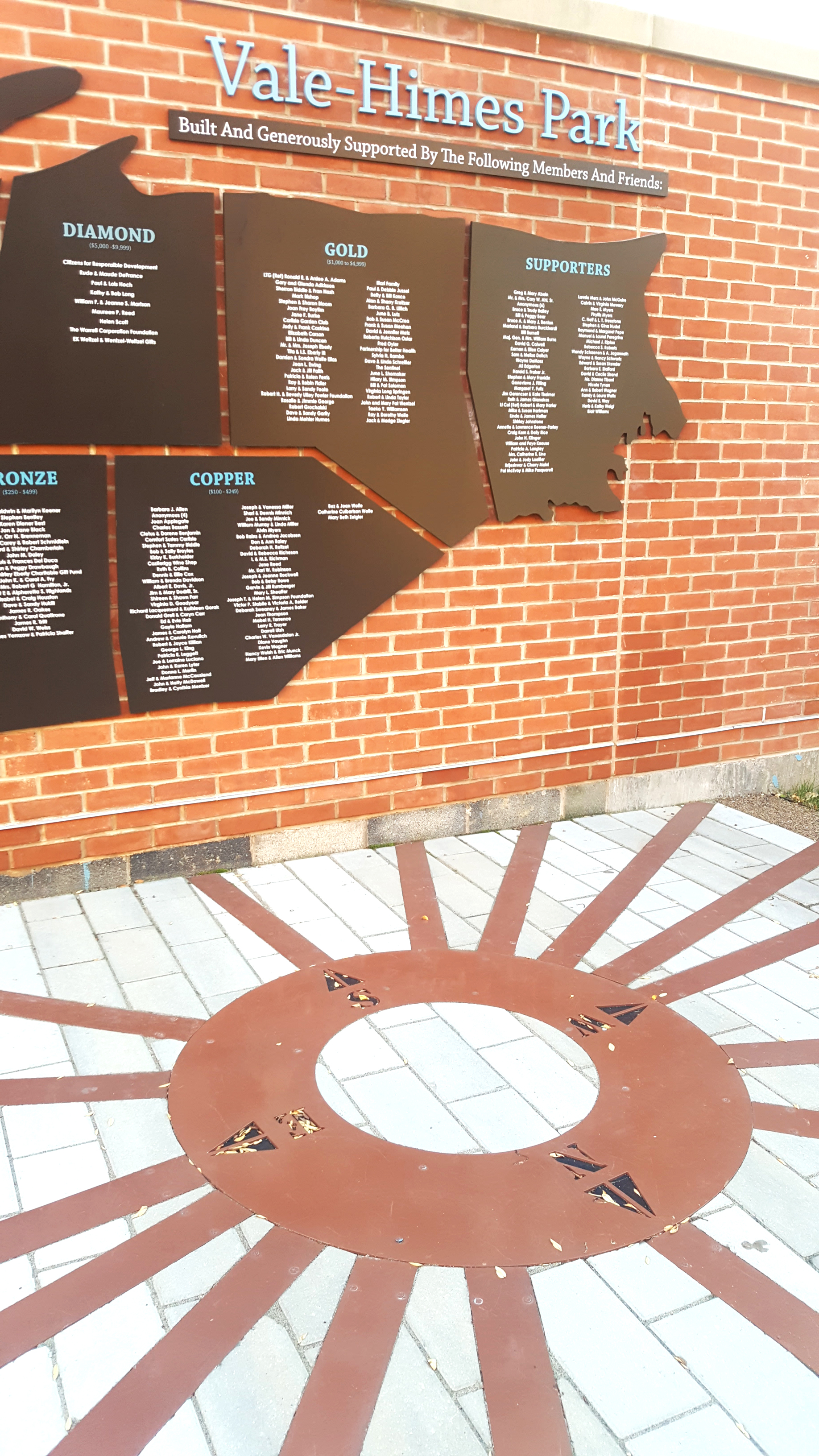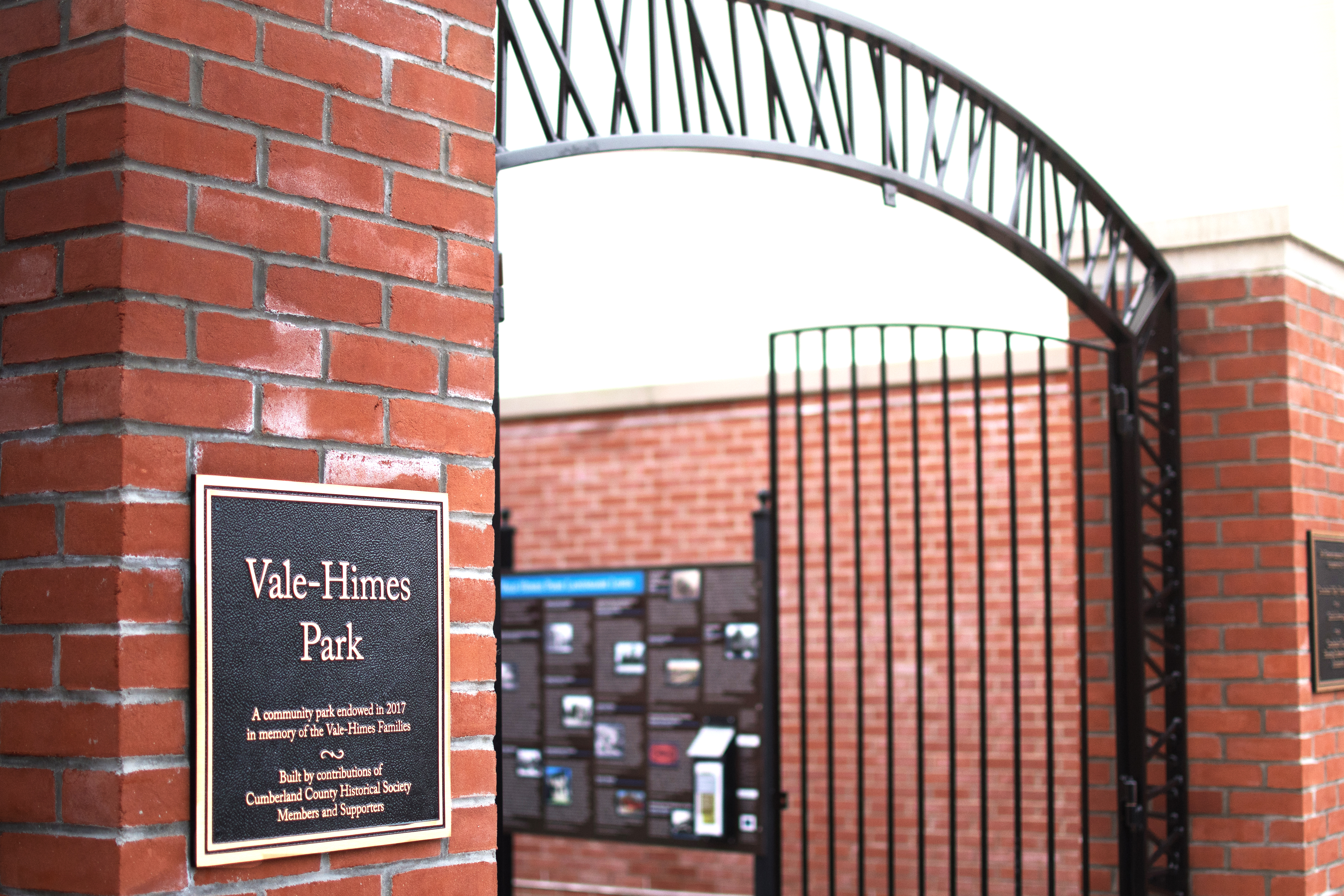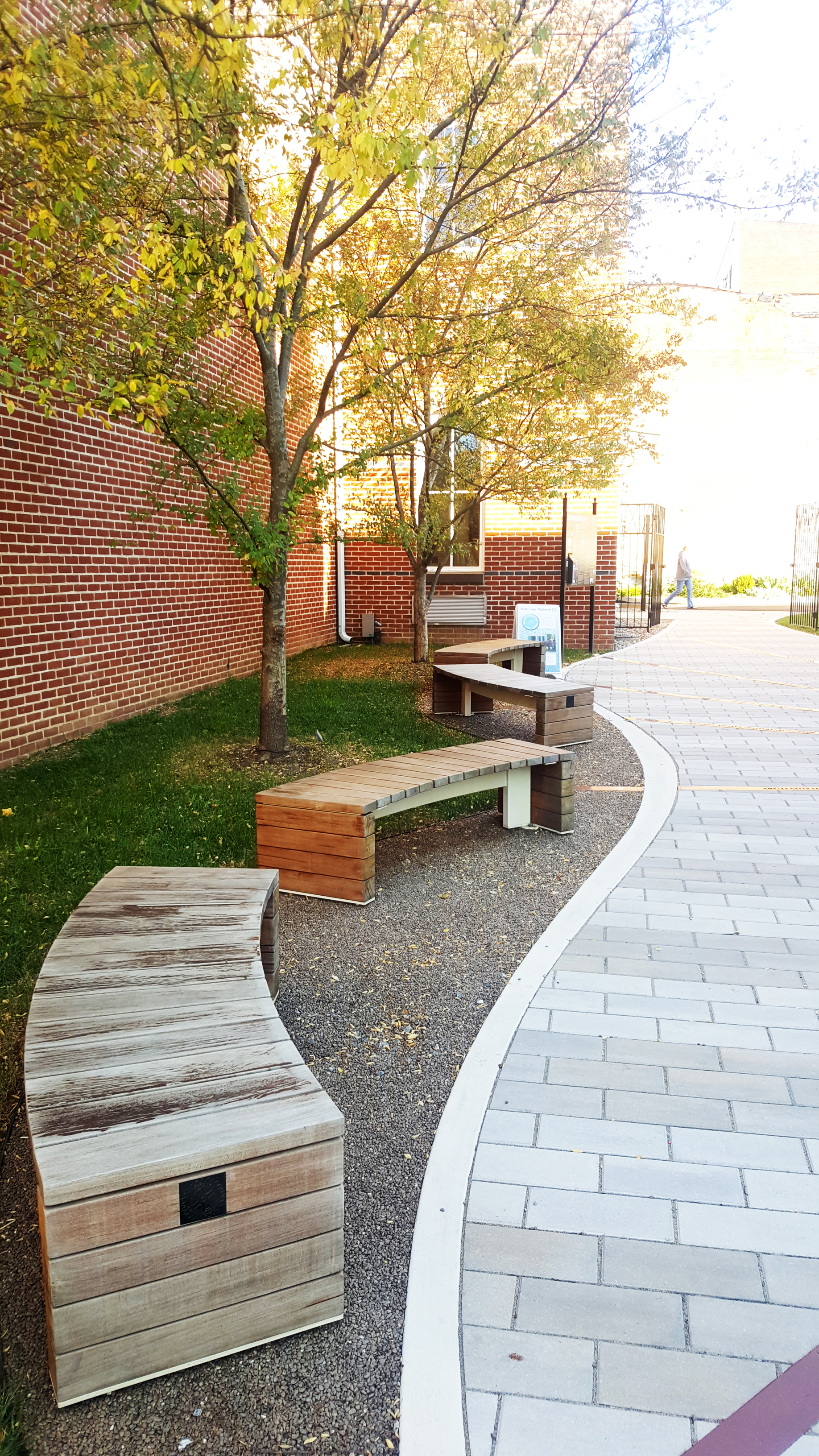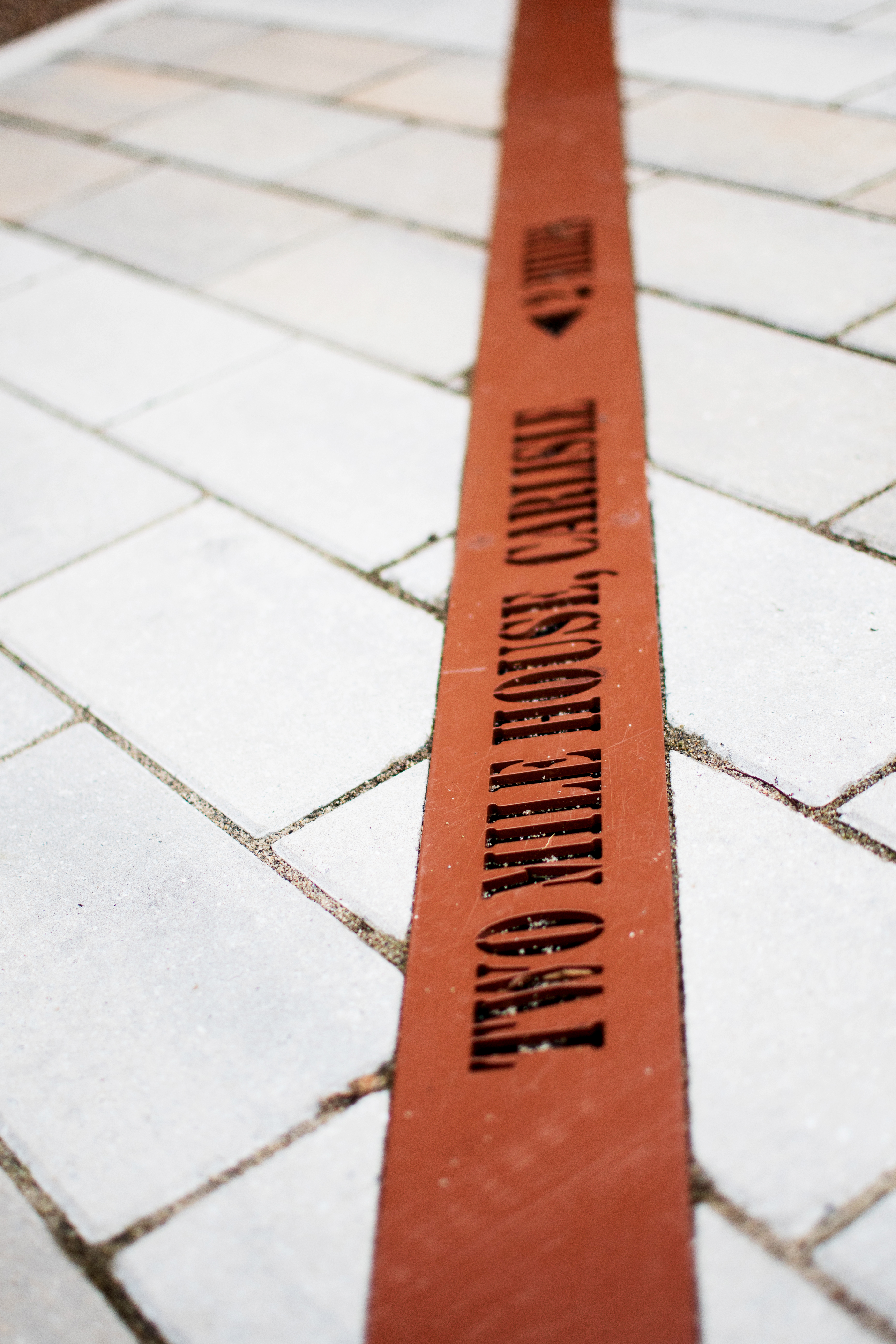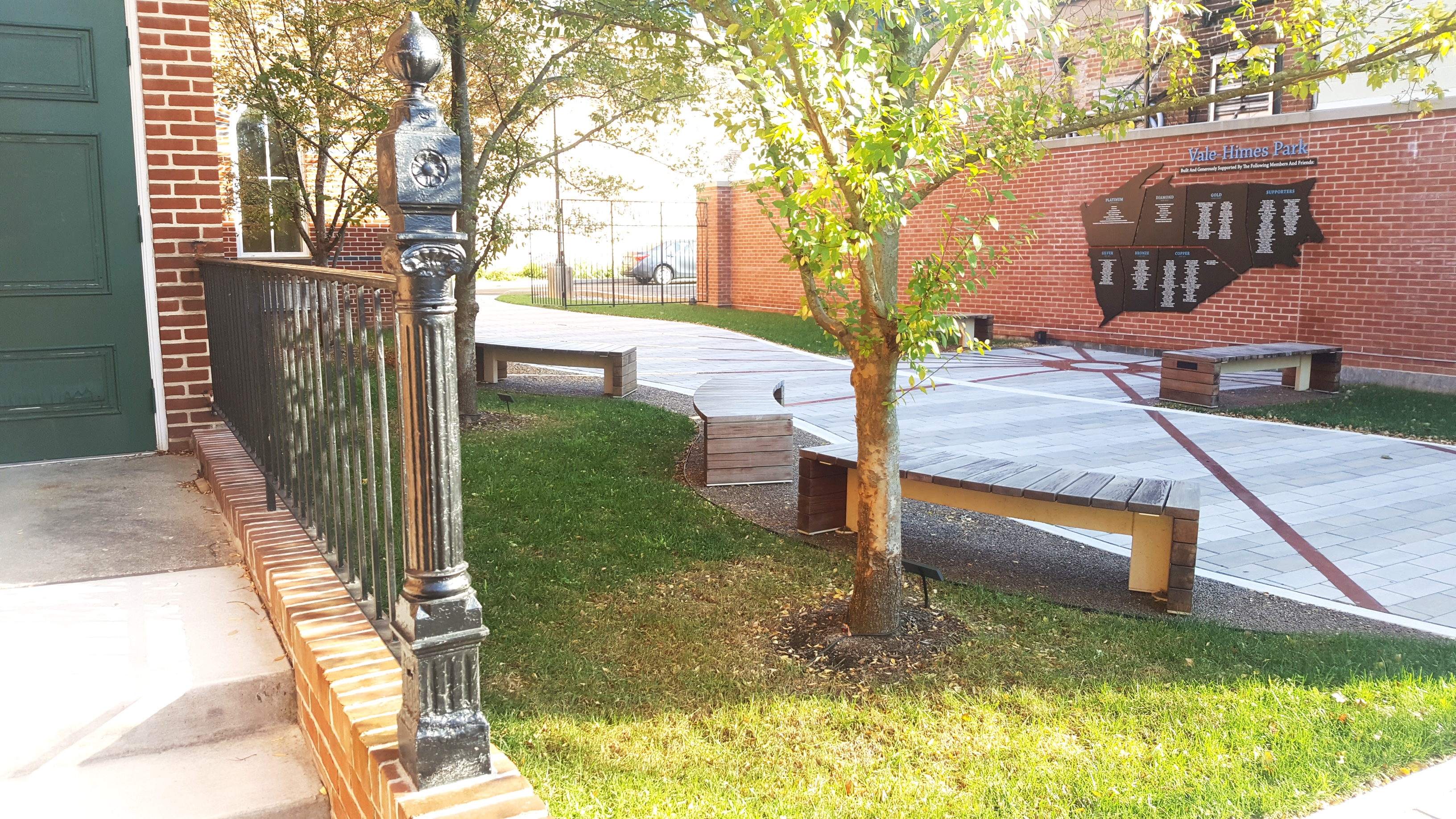Project Brief
The Cumberland County Historical Society's Vale-Himes pocket park is not only a green space within the urban downtown of Carlisle, PA, it is grounded in history, interaction and revelatory experiences. Cumberland County, founded in 1750, consists of some of the oldest and most historically significant structures in Central Pennsylvania. The park teaches visitors about these structures and is designed in a way that connects people to local history. A highlight of the space are “landmark lines” made of steel that run along the ground plane and converge at a point on the stage area of the site. This staging area is conceptually designed to represent a formal gathering space like parlor rooms in 18th and 19th century homes. If you were to follow these lines on the ground plane they would continue all the way to a historically significant structure within Cumberland County. The names of these structures are etched onto the steel lines and provide mile markers showing the viewer how far away these structures are to that point on the stage (ex: Widow Piper’s Tavern 20 miles). Informational signage helps further explain the parks concept and the structures represented on the “landmark lines.”
Client Type
Services Provided
A pocket park (vest-pocket park, parklet, parkette) is a smaller park open to the general public that is usually too small for large recreational activities such as competitive sports. Created from single or several vacant lots, they provide respite and relaxation for the passerby. Usually enclosed by larger, multi-storied buildings, these parks can exist within the urban, suburban and rural environment but are mainly found in more populated areas.
Design Highlights:
